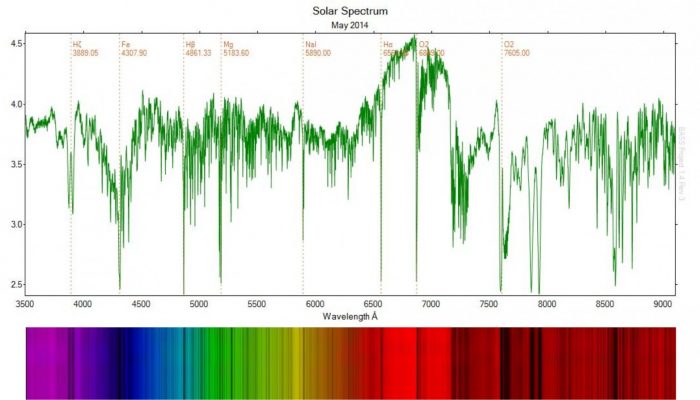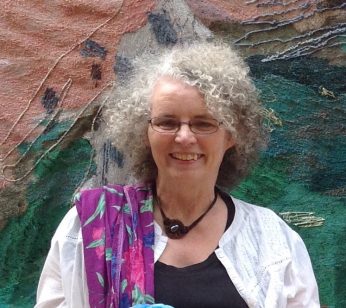
In the December issue of Life of a Scientist we have an interview of Dr. Helen Mason. She was working at the Department of Applied Mathematics and Theoretical Physics at the University of Cambridge, UK until recently when she retired. Her research interests include UV and X-Ray spectrum of the Sun. She has also devoted a lot of time in promoting science and working with schools from all over the world. Retirement for her means “more time for outreach and work with schools”. She has been awarded the OBE (Order of the British Empire) for her public service.
What got you interested in solar physics?
I had an interest in astronomy from an early age. As a small child, I can remember looking up at the night sky with wonder. I studied physics and astronomy at university (Queen Mary College London), and did a topic on the solar wind for my dissertation. I found it fascinating. I was lucky enough to get a PhD place with Prof Mike Seaton at University College London, UCL, to study atomic physics and solar eclipse spectra.
What was your personal drive behind creating the CHIANTI atomic database which is widely used by the stellar and solar physics communities?
CHIANTI is an atomic database setup to calculate spectra from astrophysical plasmas
My expertise is in spectroscopy and atomic physics. I have calculated a lot of atomic data for the coronal visible, UV and X-ray lines. I realized that it was not easy for the solar community to access and use all these data. Ken Dere, from the USA, Brunella Monsignori-Fossi, from Italy, and I met for lunch at a solar physics conference in Italy, and we decided to make atomic data freely accessible online with a user-friendly interface. We decided to call this package CHIANTI, because we all love Italy. Sadly, Brunella died prematurely, but others have joined our team. CHIANTI was first launched over 20 years ago and is regularly updated and improved. We are very proud of our achievement, and very happy that it is used so widely.
As an expert in solar space instruments, having worked on pioneering projects from the Skylab solar observatory to Hinode, what is the one instrument that you would like to see in space in 10 years’ time?
It has indeed been an honour to work on so many wonderful and exciting solar missions, with so many fantastic teams from the UK, USA, Europe and Japan. We have learnt so much about the Sun and the solar atmosphere, but we are still lacking a few pieces of the jigsaw. Of course, I love spectroscopy and what I would really like to see is further developments of complex instruments which combine spectra with high cadence imaging of the solar atmosphere. We’ve had a few examples already, with the early HRTS rocket instrument, and more recently with the superb IRIS solar observations. I’d also like to look again (as we did with the Solar Maximum Mission) at the soft X-ray wavelength region. We could then really get to grips with linking the theory and observations.
A lot of women in science are forced to make compromises between career and family. Did you have to make such a choice? And is there something you would have done differently given another chance?
Combining a career in science with family commitments is never easy, for a male or a female. I have been fortunate that my husband and the people around me have been very supportive. When I was working on SMM at NASA’s Goddard Space Flight Centre, my small children came with me. I was lucky that my sisters were keen to help out and have a free holiday. My solar colleagues have been hugely supportive, with words of encouragement when times looked bleak. I owe so much to the support from senior people (males and females) who believed in me and my abilities. I chose to work part-time for many years. This was a good decision, but not everyone recognizes that working part time does not indicate a lack of commitment, far from it. I have been invited to apply for Professorships at other UK universities, but this was not logistically possible with a family. I don’t regret my decision to stay in Cambridge. It is a wonderful place to live and work.
The OBE is indeed a great honor, in what way did this affect your –daily life –professional life?
The award of the OBE was indeed a great honour, but more so because someone had written a citation for me. You never know who or what they wrote, but the fact that someone did this, touched me deeply. It gave me more confidence in myself and the unconventional path I have trodden. Most of my peers (male and female) are now Professors. I probably could have been too, if I had made different decisions, but I have to say that very few of my peers have an OBE. It is awarded for ‘service’, and this means a lot to me. My OBE was awarded for services to higher education and women in STEM, which makes it very special. In addition, I was awarded it by the Queen at Windsor Castle, a place close to where I grew up.
You have worked extensively with young children and with graduate students. Which group do you prefer to work with? And do you notice a “generation gap” between these two sets of students?
I have indeed worked both with University students and school children. I have had several graduate students, have taught undergraduates. I am also a Life Fellow of St Edmunds College, and was a tutor, then Senior Tutor, so I have supported many students in different faculties, from all over the world. I still keep in touch with some, which is a great joy.
I have worked with school children in the UK, South Africa and India. I lead the Sun|trek project (www.suntrek.org) which has been highly successful. Working with graduate students and with children is of course very different. I enjoy both. Yes, of course there is a generation gap. Children are now growing up in a very high-tech, consumer dominated world, where ‘celebrity’ is all about getting on a TV reality show. The pressures on children these days are immense, and many are suffering with bullying, depression, eating-disorders etc. This is a huge responsibility for our society.
As a woman of so many accolades, what was the one thing in your career that you consider a triumph but never got the acknowledgement you deserved?
Career-wise, I don’t seek accolades, but I do like the work I have done to be acknowledged. I have had a few significant press releases, and participated in media activities, radio and TV. I don’t think I have a ‘triumph’ which never got the acknowledgement which I thought it deserved.
It’s been a long fight for the cause of women in science, a fight that is far from over. Specially in some fields. What do you think about the drastically varying percentage of women in some fields Vs others. Are there lessons we should learn and use to improve things across the board?
Well, I think I could write a whole treatise on this topic. My view is that everyone has their own path to tread, all equally valid. The main issue is with perceptions, and this requires a cultural change. We do not all need to follow the same ‘standard’ career path. This is not an issue which just concerns women. I know men whose careers are suffering because of family commitments or other responsibilities. For couples in a relationship, a major issue is one of mobility, that is they need to find positions in the same location. This rarely happens, and one partner often has to compromise, possibly surviving for many years on ‘soft’ money. Males can find it equally hard to get funding and grants after a certain age, no matter how good they are. Technology should make it much easier to work remotely, which should make life easier, but doesn’t seem to yet. Part-time working or ‘time off’ still counts against you in job selection and promotion. Having a family is a commitment, which needs to be recognized. A work/life balance is important for males and females in our society. Attitudes need to change at the highest levels to provide more flexibility in our working patterns.
What is life after retirement?
I am still waiting to see what ‘life after retirement’ will be like. I hope to focus more on the things which I find fulfilling, my research and outreach work. I hope to start some new ventures and have more time for my family and friends. This is the theory, but I have not yet been able to put it in practice! I intend to do my solar research, and to be involved in future projects. I am also keen to link science and art. I lead an STFC funded project ‘SunSpaceArt’ which takes scientists and artists into schools. The children have produced some fantastic, creative and imaginative work. It is very rewarding to see how animated they get. I believe that STEAM, STEM with Art, is a good way forward for the future.


